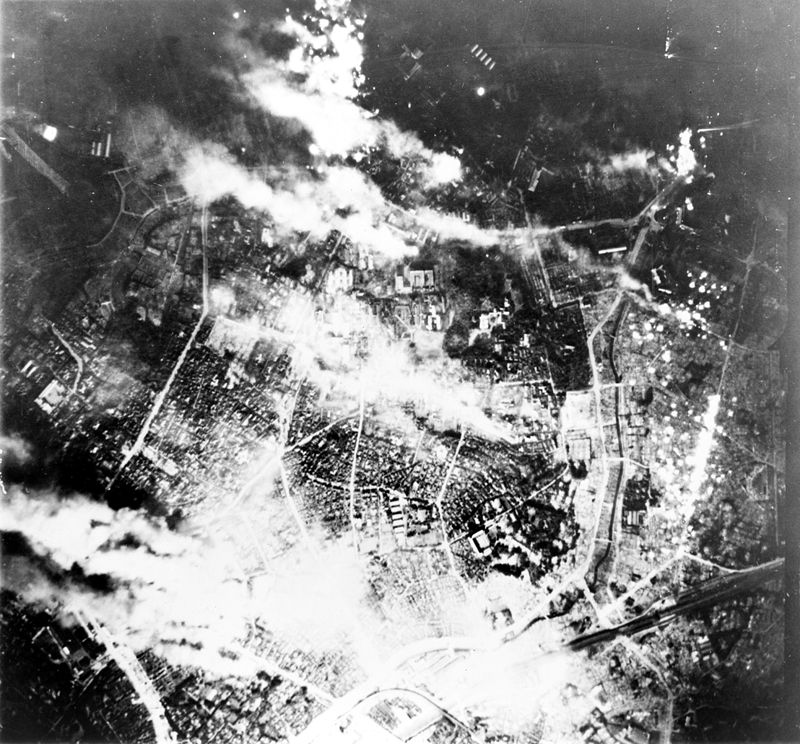During Operation Meetinghouse on March 9-10, 1945, U.S. forces devastated Tokyo, resulting in the deaths of 100,000 civilians and the destruction of 16 square miles of the city. This significant loss considerably weakened Japan’s war efforts. By early 1945, Japan faced increasing military pressure from the United States. Under the leadership of General Curtis LeMay, the military implemented an incendiary bombing strategy at low altitudes to target the wooden structures prevalent in Tokyo. Throughout World War II, the United States gained control of the Mariana Islands, which became primary locations for deploying B-29 Superfortress bombers, even though these bombers struggled to hit their targets from high altitudes accurately.
As 279 B-29 bombers departed from Saipan, Tinian, and Guam, the foreboding lights of Tokyo glowed in the distance. The first incendiary bombs went off all around the city at 12:15 a.m. The town was immediately engulfed in flames as 1,665 tons of napalm-filled incendiaries were released during the attack. Many people who sought shelter in the water perished from the intense heat during the ensuing firestorm, which had temperatures as high as 1,800°F and produced gusts powerful enough to collapse airplanes. With barely 8,000 firefighters, Tokyo’s weak defenses were overpowered as entire neighborhoods burnt.
The military success declared by General LeMay following the 90-airman loss pushed him to initiate extended firebombing operations across multiple Japanese towns. Although the atomic bombings of Nagasaki and Hiroshima, along with the Soviet declaration of war, led Japan to surrender quickly, the firebombing attacks set Japan on the path to destruction beforehand.
The Tokyo Firebombing remains a highly debated topic in history due to its status as one of the most controversial military attacks aimed at civilian populations. Today, the Tokyo Firebombing Memorial honors the victims, and accounts from survivors serve as haunting reminders of the tragedies of war.

